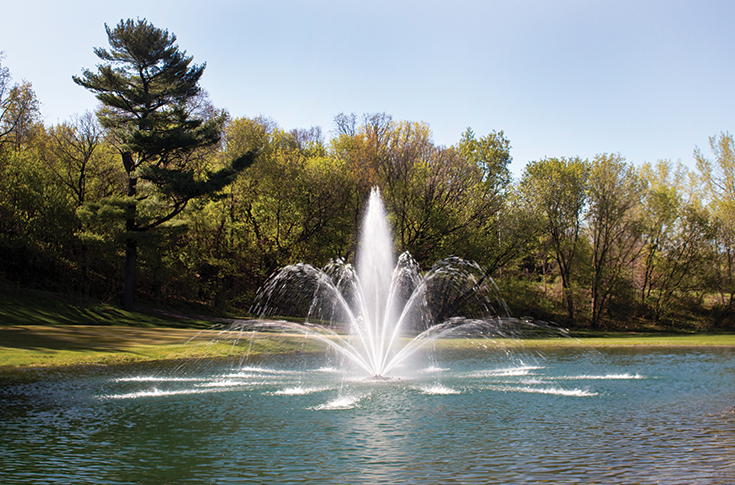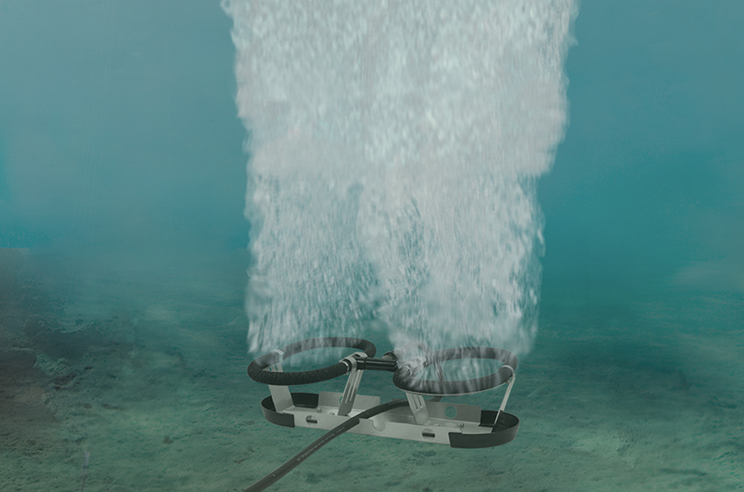Healthy, functional lakes and ponds require oxygen. Unfortunately, organic build-up that naturally occurs over time reduces a waterbody’s ability to maintain adequate oxygen levels. Waterbodies with poor water quality can suffer from water quality impairments like algae, toxic cyanobacteria, and aquatic weed growth. These water quality issues can be a headache for anyone who owns or manages a waterbody. Fortunately, lake managers can utilise three solutions to increase oxygen: floating fountains, surface aerators, and submersed diffused aeration.

Floating Fountains
Simply put, a floating fountain is an electric motor attached to a float that physically forces water into the air. As water is propelled into the air, circulation occurs around the fountain, and the natural oxygenation of the water column is enhanced. Floating fountains come in different shapes, sizes, and spray patterns and can serve as the focal point of a pond while helping improve water quality. One thing to keep in mind is that the more appealing the display, either with a nozzle or special flow chamber, the less water is being circulated which can limit oxygen introduction.

Surface Aerator
Surface aerators are designed similarly to floating fountains but have the sole purpose of water movement and oxygen input. These systems run at lower speeds with large propellers that produce a boil-like flow on the surface of the water. Surface aerators are excellent for problematic ponds due to their ability to maintain a high flow and inject up to 1 kg of oxygen per horsepower, per hour into the water. Ponds with less than 1 to 2 meters of average depth should consider either a floating fountain or surface aerator.

Diffused Aerator
Diffused aeration can effectively increase DO levels in lakes and ponds with average depths above 2 meters. Submersed aeration systems have a compressor on shore that pumps air through tubing to diffusers located on the lake bottom that release fine air bubbles, creating a lifting action. These systems do not directly inject oxygen into the pond, but help circulate large amounts of water, which helps increase oxygen levels. These systems work better in deeper and larger waterbodies and are usually the best solution to break thermal and oxygen stratification.
Conclusion
There are many techniques to help increase dissolved oxygen levels, and aeration is a tried and true method. These solutions can be paired together to help introduce more oxygen to your waterbody. Whether you should combine these aeration solutions will depend on your goals for the waterbody.
Water quality issues, logistics, and your overall goals will dictate which system is the best fit for your lake or pond. It is recommended to work with a lake management professional to properly size, install, and maintain the aeration systems to ensure they function properly for years. Remember, lakes and ponds with aeration can still present water quality issues, so it is important to regularly monitor your water to stay ahead of issues, resulting in a beautiful pond all year round.
